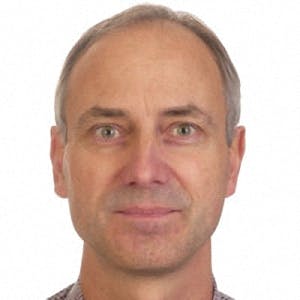Within this session, we introduce new technologies that when used in combination with data acquired via both real measurements or Multiphysics simulation bring further efficiency and accuracy to predictive capabilities. The new technologies that will be demonstrated with real use cases will introduce the use of AI, xDT both for predictive maintenance and real-time operations.
An xDT is a smart, connected virtual representation of a physical asset, including its behaviors, that senses what is happening to it, applies a simulation or algorithm, and then optimizes and updates itself. It processes sensor information (at the edge or in the cloud) to recognize its environment and then adjusts to those conditions. We will show the value of the xDT via a practical demonstration case, and by a customer presentation on an industrial project.
The next step is to close the loop between the digital twin and the real assets, by gathering data from the real systems to continuously update and improve the fidelity of the digital twin. We do this by leveraging the industrial internet of things, artificial intelligence, and machine learning to automatically fine-tune the digital twin.
Rapidly reduce the risk and increase the product safety, reliability, availability, maintainability using a model-based approach during concept definition for the initial design. Use qualitative functional simulation to support analysis that will identify and mitigate potential engineering risks based on technical, operational, and economic consequences.
Finally, we will present RAMS: Model-based Reliability, Availability, Maintainability, and Safety.
RAMS allows you to build a Digital Risk Twin of your system to identify the expected behavior and the impact of potential failures and risks associated with a design configuration in an objective, repeatable, and traceable process. Using qualitative simulation, you will be able to easily analyze and understand the potential impact of design decisions on product safety, reliability (technical risk), and operational availability before it becomes impractical to change the configuration of the product. This allows you to design for reliability and link functional failures for each maintainable item and identify the most cost-effective maintenance approach tailored to the asset usage.
Story line:
- Introduction to xDT
- Intro SVS
- Robot demo
- LAB Motion case
- Interesting tech (Blade with AR)
- Introduction into AI
- Intro AI
- Application case
- RAMS
- Intro RAMS
- Demonstration
講演者の紹介

Alex Vermeulen
Portfolio Development Simcenter TEST Solutions

Leoluca Scurria
製品マネージャー
Simcenter 3D Smart Virtual Sensingの製品マネージャーとして、シミュレーションと実際の測定の長所を組み合わせたソリューションを顧客に提供しています。仮想センシングは、実行可能なデジタルツインの実現に欠かせない重要な技術です。Scurriaは、デジタルツインを製品ライフサイクル全体で活用するための戦略を策定するうえで重要な役割を果たしました。イタリアのピサ大学で機械工学の学士号、修士号、および高忠実度の数値モデリングとモデル低次元化の博士号を取得。

Koen Peeters
R&D Engineer

Wim Hendricx
Business Development Engineering

Stefan Dutré
Senior Product Manager Model-based RAMS Solution
After Mechanical Engineering studies in Belgium and a Ph.D. in Robotics at the Catholic University of Leuven, Stefan joined CADSI NV in 1997 as a mechanical consulting engineer. In 1999, he joined the Simcenter Engineering services team as a project engineer. Stefan performed an MBS load identification project of the in- and outboard flap systems for the Embraer ERJ 135/ERJ 145. He was a project and account manager for different aerospace projects with MHI. In 2009, he joined the Simcenter Aerospace Competence Center as a business development manager. Since 2014, he has driven the MBSE solution strategy at Siemens for the aerospace industry.
.jpg?auto=format,compress)